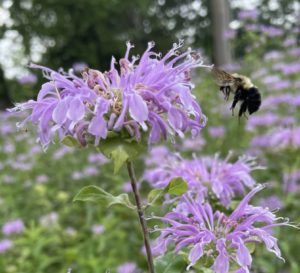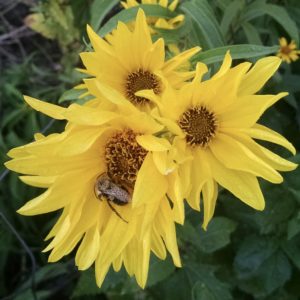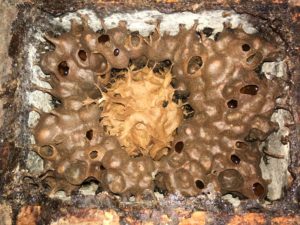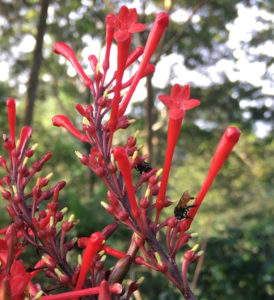Causes and consequences of disease-induced changes to bee foraging
Animals often alter their diet as a result of infection (think about how good warm soup feels when you have a cold!). In some cases, animals ‘self-medicate’ by selectively consuming foods that are not optimal for healthy individuals but can help reduce infection severity. While this behavior has been observed in many animals, we don’t have a good sense for the molecular basis for it, or whether it has consequences for the fitness of the ‘medicinal’ species. And while, in many ways, bees seem like ‘model citizens’ for self-medication – given their often generalist diet and the diversity of bioactive phytochemicals found in many pollens and nectars – evidence for self-medication in bees has so far been limited.
We are developing a model system to investigate disease-induced changes to bee foraging, using bumble bees, the parasite Crithidia bombi, and the common wildflower wild bergamot (Monarda fistulosa). Wild bergamot has multiple chemotypes, and the dominant terpenes found in the different chemotypes have differing anti-parasitic effects on Crithidia, making this a very cool system in which to investigate these questions.

Effects of urbanization on bee communities and plant-bee interactions
Cities are expanding rapidly worldwide, with uncertain effects for many organisms and ecological processes. Our lab works to understand how urbanization impacts wild bee communities, and interactions between bees and the plants they pollinate. We have been particularly interested in cryptic effects of urbanization, including its impact on bee sex ratios, dispersal patterns, and foraging preferences. We partner with community organizations to design research programs and disseminate findings in ways that are mutually beneficial.
More recently, we’ve gotten interested in how urbanization influences the nutritional and phytochemical landscape bees encounter, and how this can influence pollinator health both via nutrition and via disease susceptibility or resistance.

Effects of coffee agroecosystem management on coffee pollination and stingless bee diet and health
Stingless or Meliponine bees are ecologically, economically, and culturally significant pollinators across the tropics. But populations of some species are declining. We are interested in how coffee agroecosystem management – including agrochemical use, shade cover, management of non-native honey bees, and non-crop plant diversity and management – influence the foraging behavior, diet, and colony health of these bees. Ongoing interests in stingless bees in the lab include the use of resins in protecting colonies from antagonists, and how resin use is influenced by landscape and community context.

Ecological drivers and eco-evolutionary consequences of nectar robbery
Nectar robbery is a common behavior in many nectar-feeding animals. The intensity of nectar robbery experienced by a plant population commonly varies widely across space and time. Gordon’s dissertation work investigated the drivers of this spatiotemporal variation in nectar robbing, using interactions between the plant Odontonema cuspidatum and nectar-robbing stingless bees as a study system. We hope to extend this research in the future, asking whether conflicting selection by flower exploiters (nectar robbers and thieves, but also florivores) and pollinators may drive adaptive pollen limitation.
